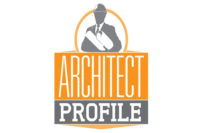With roots beginning in 1963, Integrated Design Solutions has steadily grown into one of Southeast Michigan’s premiere full-service A/E firms.

|
| Associate/Senior Architect, Kevin S. Marshall, AIA, LEED AP BD+C |
Located in Troy, MI, IDS’ 85 employees collaborate on project types serving the college/university, healthcare, corporate workplace, research & development, K-12, technology, religious and commercial markets with emphasis on providing the highest client service, progressive vision and integrity. They exhibit a passion for the profession and bring high energy to break down traditional paradigms and shift thinking. That reputation is well known to their national and international design partners including Renzo Piano Building Workshop, Perkins+Will, Hartman Cox Architects, Allied Works Architecture, Ennead Architects, Workshop Architects and Zaha Hadid Architects.
W&C Architect interviewed Associate/Senior Architect, Kevin S. Marshall, AIA, LEED AP BD+C, who has 18 years of experience.
W&C Architect: How many years do you have in the profession?
Marshall: I have been working in the profession for 18 years.
W&C Architect: What is your work history in this field?
Marshall: For the vast majority of my career to date, I have worked in the College and University sector with some K-12, Religious and Medical sector experience. Within the College and University sector, I have been involved with everything from Chemistry Classroom/Laboratory Buildings, to Child Care Centers, to Law Schools and Art Museums.
W&C Architect: Where did you go to school?
Marshall: I received both my Bachelor of Science in Architecture and Bachelor of Architecture from Lawrence Technological University in Southfield, Michigan.
W&C Architect: Did you have a specialization?
Marshall: Being involved in the College and University sector and working on a wide variation of building uses, I wouldn’t say that I have a strict specialization like historic preservation or library design. If anything, sustainable design and construction have taken a position in the front and center of my projects but more like “standard operating procedure” than a specialty.
W&C Architect: Do you approach architecture from an artistic or functional starting point? Are the two concepts exclusive?
Marshall: I feel that my strengths lie in the ability to make the artistic functional and feel that neither concept will ultimately be successful without the other. I am not, in my opinion, a strong conceptual designer but instead focus on developing the thoughts and ideas of my team members working creatively to take the vision and translate it into an efficient, functional and coordinated design.
W&C Architect: If any, who are your role models?
Marshall: I am terrible at knowing who has done what in the world of architecture and as such don’t really have a role model. Instead, I focus more on the experience I have in a building and find myself drawn to those that have paid close attention to the smallest of details and have stood the test of time by functioning as originally envisioned.
W&C Architect: What projects, other than your own work, do you find inspiring?
Marshall: It is difficult to narrow this down as I find inspiration in many small aspects of many projects. One project that comes to mind as having a strong impact on me is the Jay Pritzker Pavilion in Millennium Park, Chicago. I find its design and execution to be both grand and intimate at the same time.
W&C Architect: How many buildings have you designed?
Marshall: Being typically part of a team with varying roles, I don’t really know how many buildings I have designed. Over the course of my 18 years, I have probably left my mark, in varying amounts, on close to 100 projects but sometimes there are 3, 4 or 5 different projects within the same building.
W&C Architect: If you had to choose one to represent your work, what project would you choose?
Marshall: I always seem to think that the last thing I have done best represents my work because of it being a culmination of what I have learned to date. That being said, I would choose the recently opened South Hall for the University of Michigan Law School in Ann Arbor, Michigan.
W&C Architect: What are your guiding principles when designing a structure?
Marshall: Too often, I feel that we, in the profession, design what we try to guess the client wants and don’t necessarily learn what they need. To be truly successful, a project needs to address the client’s needs. This will guide a design to become something that will function and be sustainable for the long term.
W&C Architect: If you could have any building to redesign—anywhere in the world—which would you like to address?
Marshall: I think that it would be rather presumptuous of myself to redesign the work of others since I haven’t been through the design process myself to understand why the building was designed as it exists. If anything, I would want to revisit some of my own old projects that I now feel could be so much better.
W&C Architect: What types of products interest you?
Marshall: I find myself drawn to products that are so simple and clean in their execution and function that I wonder why they weren’t thought of sooner.
What types of products in the wall and ceiling industry really interest you?
Marshall: My product interests lean toward those I don’t view as a fad but instead will remain a good solution many years down the road. Counter to that, I find myself more and more frequently using products in ways that they weren’t originally envisioned or marketed usually in response to a specific design goal.












